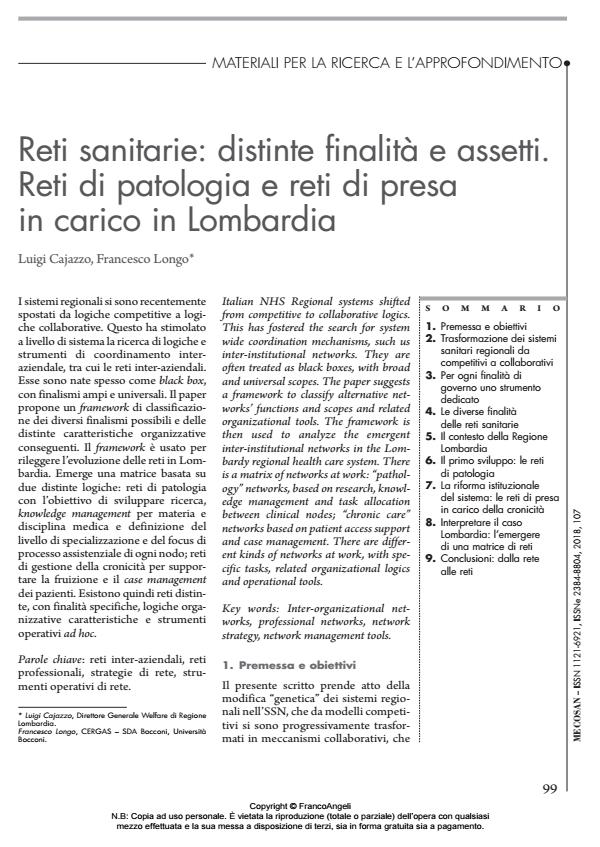Reti sanitarie: distinte finalità e assetti. Reti di patologia e reti di presa in carico in Lombardia
Journal title MECOSAN
Author/s Luigi Cajazzo, Francesco Longo
Publishing Year 2019 Issue 2018/107
Language Italian Pages 22 P. 99-120 File size 283 KB
DOI 10.3280/MESA2018-107006
DOI is like a bar code for intellectual property: to have more infomation
click here
Below, you can see the article first page
If you want to buy this article in PDF format, you can do it, following the instructions to buy download credits

FrancoAngeli is member of Publishers International Linking Association, Inc (PILA), a not-for-profit association which run the CrossRef service enabling links to and from online scholarly content.
Italian NHS Regional systems shifted from competitive to collaborative logics. This has fostered the search for system wide coordination mechanisms, such us inter-institutional networks. They are often treated as black boxes, with broad and universal scopes. The paper suggests a framework to classify alternative networks’ functions and scopes and related organizational tools. The framework is then used to analyze the emergent inter-institutional networks in the Lombardy regional health care system. There is a matrix of networks at work: "pathology" networks, based on research, knowledge management and task allocation between clinical nodes; "chronic care" networks based on patient access support and case management. There are different kinds of networks at work, with specific tasks, related organizational logics and operational tools.
Keywords: Inter-organizational networks, professional networks, network strategy, network management tools.
Luigi Cajazzo, Francesco Longo, Reti sanitarie: distinte finalità e assetti. Reti di patologia e reti di presa in carico in Lombardia in "MECOSAN" 107/2018, pp 99-120, DOI: 10.3280/MESA2018-107006